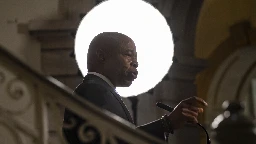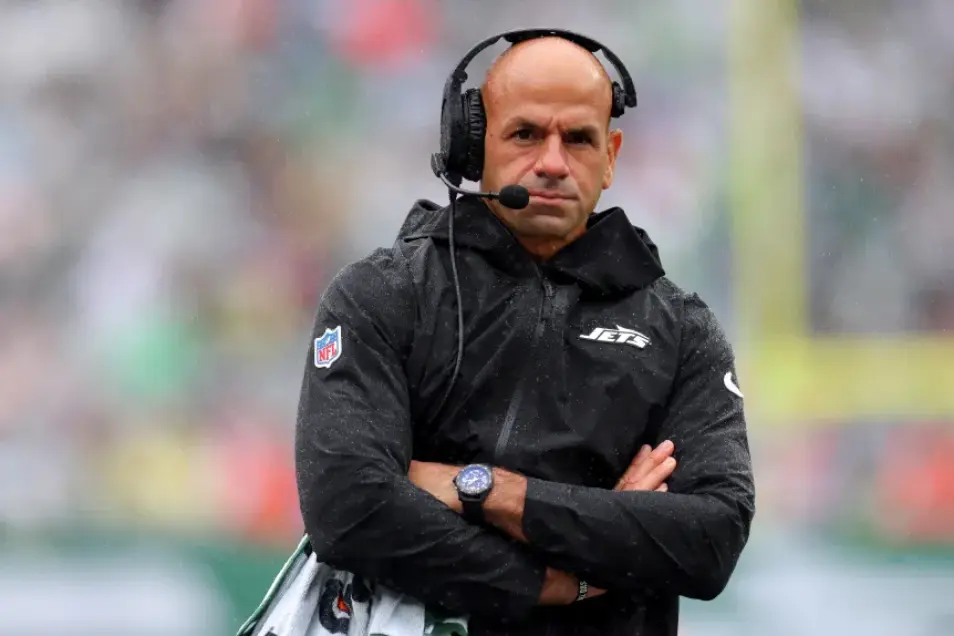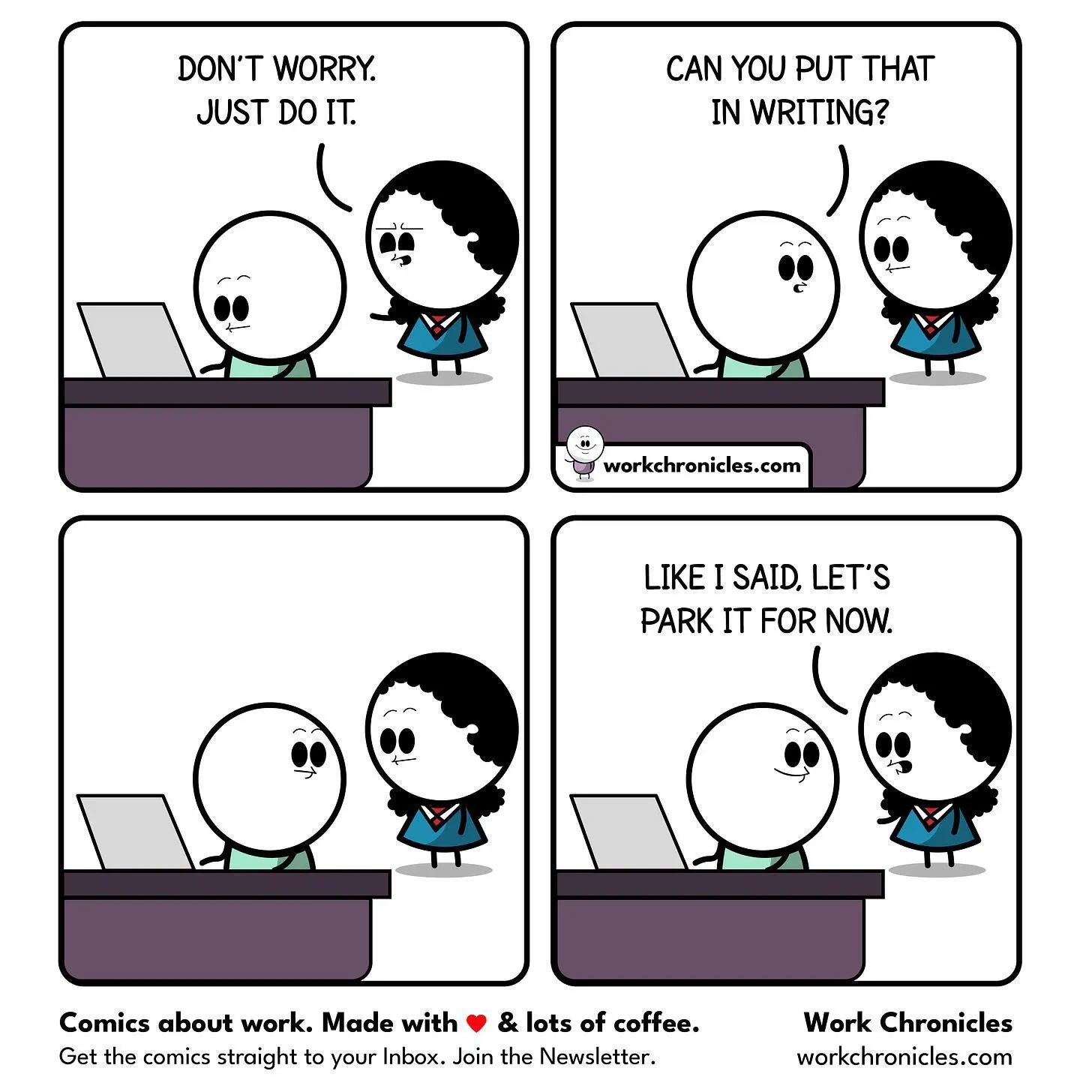I know that the state is trying to manufacture standing so it can bring the claim, but this is a deeply cynical and unethical argument that I would be embarrassed to make.
I live in a small city built out a couple decades ago
It's probably a fair point to mention that smaller cities and towns have wildly different parking needs than NYC, where the majority of residents don't own a car. The existence of parking minimums in a place like New York is just bonkers. (Thanks, Robert Moses!)
I still expect plenty of parking to be built after any city repeals parking minimums, it just isn't an excessive amount, and the city and developers soon start arriving at a natural equilibrium (compared to an inflated floor) of what is actually required, depending on what kind of business or residence it is, where it is located, etc.
The big factor about parking is how much it adds to housing costs. The Government Accountability Office did a report in 2018 that estimated that parking requirements added $50,000.00 to every housing unit sold. Obviously, some parking will probably be needed, but just reducing the amount has the effect of an immediate per-unit cost reduction for a given multi-family project. https://www.gao.gov/assets/gao-18-637.pdf
The 150-foot beehive-like structure almost closed for good after a series of deaths.

The Vessel in Manhattan’s Hudson Yards will officially begin welcoming visitors again Monday with enhanced safety measures, three years after it closed to the public in response to several suicides.
The 150-foot beehive-like structure now features floor-to-ceiling steel mesh barriers encasing several of its stairways and platforms, and the top level will remain closed. The barriers were designed to be cut-proof and weather-resistant, according to a spokesperson.
Built in 2019 for $200 million, the Vessel was a popular tourist attraction and photo spot in the center of Hudson Yards, until four people jumped to their deaths from its upper floors.
...
I would totally drive a Moosetang. Or, if you want to be boring, just call it a Moose. But that would be hilarious. Make this happen, Ford!
Temwa Chawinga Has Conquered The NWSL
How would you imagine the greatest individual season in NWSL history? Our hypothetical player would need to score a lot of goals, obviously. Breaking Sam Kerr’s single-season scoring record (18) would certainly get plenty of attention, so let’s put that at the top of the list. How about assists? Ass...

How would you imagine the greatest individual season in NWSL history? Our hypothetical player would need to score a lot of goals, obviously. Breaking Sam Kerr's single-season scoring record (18) would certainly get plenty of attention, so let's put that at the top of the list. How about assists? Assists are important, too. Let's say this player has ... five of those. Five sounds good.
Let's go back to the goals for a second. We know that all goals aren't created equal, and that poachers and penalty specialists can often sneak their way to the top of the leaderboard. That just won't do—we're talking about the best season in history, here—so let's make sure our player didn't score any of her goals from the spot, and is out-performing her expected goals tally by two. We need more, though. Let's get crazy and say that this player is an NWSL rookie, and arrived from Chinese Women's Super League at age 25 to blitz the NWSL with the league's first 20-goal season. We'll need a fun, quirky statistic, too, so let's say this player became the first in league history to score a goal against every team. And we need moments. Like, what if the record-breaking goal happened to be a 25-yard strike that makes a convincing case for being the hardest a soccer ball has ever been struck by a woman in a professional match? What if that goal looked something like this:
...
With the win, New York took home its first-ever title after having lost five prior appearances in the WNBA Finals.

cross-posted from: https://lemmy.world/post/21100251
> NEW YORK — At long last, the New York Liberty are WNBA champions. > > Sunday’s Game 5 between the Liberty and Minnesota Lynx was far from New York’s most aesthetically pleasing game of the season, but style points aren’t awarded in winner-take-all affairs. Instead, the only number that matters is the final margin — a 67-62 Liberty overtime win — in crowning a champion. > > “One more (point) than the other team,” star New York guard Sabrina Ionescu said of what stat would be most important Sunday. > > Jonquel Jones led the Liberty with 17 points en route to being crowned the finals MVP. Breanna Stewart added 13 points and 15 rebounds in a grinding affair and reserve center Nyara Sabally provided the most unexpected but necessary boost of all, playing a playoff career-high 17 minutes, scoring 13 points and hauling in seven rebounds. > > With it all coming together just enough, New York took home its first-ever title, having lost its five prior appearances in the WNBA Finals. > > ...
With the win, New York took home its first-ever title after having lost five prior appearances in the WNBA Finals.

NEW YORK — At long last, the New York Liberty are WNBA champions.
Sunday’s Game 5 between the Liberty and Minnesota Lynx was far from New York’s most aesthetically pleasing game of the season, but style points aren’t awarded in winner-take-all affairs. Instead, the only number that matters is the final margin — a 67-62 Liberty overtime win — in crowning a champion.
“One more (point) than the other team,” star New York guard Sabrina Ionescu said of what stat would be most important Sunday.
Jonquel Jones led the Liberty with 17 points en route to being crowned the finals MVP. Breanna Stewart added 13 points and 15 rebounds in a grinding affair and reserve center Nyara Sabally provided the most unexpected but necessary boost of all, playing a playoff career-high 17 minutes, scoring 13 points and hauling in seven rebounds.
With it all coming together just enough, New York took home its first-ever title, having lost its five prior appearances in the WNBA Finals.
...
Back atcha, buddy, you know this sub removes posts that don't use the article title? Take it up with the title editor, not me.
It’s hard to imagine what else Daniels could say, but Team Trump reportedly offered to reduce what she owes him in exchange for her silence.

Days before the 2016 election, Donald Trump’s former fixer Michael Cohen made a $130,000 payment to porn star Stormy Daniels in exchange for her silence about her alleged affair with the Republican presidential candidate. It did not quite go as planned. When Trump was in the White House, Daniels’s claims about their relationship (which Trump denies) went public. Years later, in May 2024, a Manhattan jury found Trump guilty on 34 felony counts of falsifying business records related to the payoff.
Trump has been trying to get his conviction thrown out or at least delay his sentencing (maybe forever). But we’ve already learned plenty of lurid details about the alleged relationship. So why would Trump make a second attempt to silence Daniels ahead of the 2024 election?
MSNBC’s Rachel Maddow reported on Wednesday that Trump’s attorney recently made another offer to Daniels. In 2018, years before the Manhattan DA brought charges against Trump, Daniels filed a defamation suit over a Trump tweet attacking her for claiming that she was threatened by a stranger to stay quiet about their affair. A federal judge dismissed the suit months later, and Daniels was ordered to pay Trump’s legal fees. As of this summer, the two camps were still haggling over the final amount: Team Trump had asked for $652,000 at one point, while Team Daniels said it should be closer to $600,000, per Maddow. Then in July, Trump’s lawyer sent a letter to Daniels’s representative saying that a payment of $620,000 was too low, but that they would agree to it if Daniels signed a nondisclosure agreement. According to MSNBC, the letter said this:
>We disagree that a payment of $620,000.00 would be in full satisfaction of the three judgement. However, we can agree to settle these matters for $620,000.00, provided that your client agrees in writing to make no public or private statements related to any alleged past interactions with president Trump, or defamatory or disparaging statements about him, his businesses and/or any affiliates or his suitability as a candidate for President.
Daniels’s lawyer rejected the offer. Eventually, Trump’s attorney said that after speaking to “my client and co-counsel,” they would agree to $635,000 — with no mention of Daniels remaining silent. Daniels’s attorney said they eventually settled on $627,500 with no NDA.
...
The Jay-Z and Alicia Keys track is 15 years old — and playing on a continuous, maddening loop for people who work in Times Square.

Students are calling for the resignation of two school leaders over their response to a sexual harassment allegation against a now-former teacher.

Around 150 students walked out of class at the University School of Nashville on Wednesday morning to call for the resignation of two school leaders over their handling of sexual harassment allegations against a now-former teacher.
The group, along with a handful of parents and alumni, gathered on the lawn in front of the school along Edgehill Avenue around 11 a.m. The University School of Nashville Student Union for Action organized the event, calling for the resignation of school director Amani Reed and assistant head of school Quinton Walker.
Students led the group in chants saying, "Reed must leave," "protect our kids" and "save our school." At times, they turned to faced the doors of the school, where one student said Reed was inside. The group also marched around the block, chanting with signs in hand as they wound along 21st Avenue South before returning to campus.
Dean Masullo, who taught English at the school for 15 years, was suspended in May immediately after a female student came forward and accused him of grooming and sexually harassing her. Masullo was ultimately fired in July. The student has since graduated. The Tennessean is not naming her, as it does not identify victims of sexual harassment.
In August, the former student's lawyer sent a letter to the school's board of trustees lambasting the response of school leaders to the situation. It said the school failed to hire an independent investigative team, despite Reed's claims it had engaged "third-party experts." The letter also said Walker promised to keep the former student and her family updated on what was happening, but instead deferred to the school's lawyer to communicate with them.
The letter also took issue with nearly $30,000 paid to Masullo as part of a separation agreement. The student union, formed in the wake of Masullo's firing, has also voiced concerns over the school's response and the payment.
"Paying off a predator is not the answer," the former student said at the demonstration Wednesday.
...
That price is so low, it might as well just be the customer list.
Edit: For the record, Juiced made some decent bikes. The HyperScorpion is a fun little moped, and I would have liked to have seen a refined version that improved on the battery design (they were really hard to put back in if you removed them for charging) and came with better stock tires.
Bring us back major concert tours from Hole, Veruca Salt, Garbage, the Breeders, and the Chicks, you cowards! (The Chicks are still filling arenas, actually, and they put on a really good show.)
I just tried this the other day, it was quite complete and fun to play!
TIL that 1,300 children are still separated from their parents from the Trump era family separation policy
Errol Morris and Jacob Soboroff discuss their new film, “Separated,” which chronicles the Trump administration’s “Zero Tolerance” immigration policy, which separated more than 4,500 children from their parents between 2017 and 2019. 1,300 children are yet to be reunited due to incomplete information...

Vouchers are public subsidies for private businesses, and often fuel fringe religious-social movements, change my mind.
Cybercabs are two-seater vehicles
Just two seats why? Has this so-called genius ever taken a cab with friends ever?
I don't like how every news story about the layoffs uncritically parrots the company excuse about the strike, as if decades of regulatory capture, short-term business strategy, and poor engineering and supply chain decisions by successive waves of over-paid executives didn't sink the company.
Rented e-scooters set to vanish from Madrid streets


MADRID, Oct 8 (Reuters) - Operators of rental e-scooters will have until Oct. 25 to remove all their mobility devices from the streets of Madrid, the mayor's office said on Tuesday, following an outcry against reckless driving and chaotic parking by their users.
After withdrawing their licences last month, the mayor's office said the three foreign operators - Lime, Dott and Tier Mobility - had failed to implement limits on their clients' circulation or control their parking to regain the licences. Amsterdam-based Dott, Germany's Tier Mobility and U.S.-based Lime, whose scooters are available via the Uber have around 2,000 e-scooters each throughout Madrid.
...
A former New York City official was charged Tuesday with witness tampering and destroying evidence as a federal investigation led to Mayor Eric Adams’ bribery indictment.

NEW YORK (AP) — A former New York City official was charged Tuesday with witness tampering and destroying evidence in a sweeping federal investigation that led to Mayor Eric Adams’ indictment on charges he took bribes and illegal campaign cash from foreign interests.
The arrest came amid an ongoing exodus of top Adams administration officials, as federal prosecutors delve deeper into allegations that the mayor was using staffers in an attempt to cover up wrongdoing.
Mohamed Bahi, who resigned Monday as the mayor’s liaison to the Muslim community, is accused of encouraging a businessman to solicit illegal straw donations from four of the businessman’s employees and to then lie about it to the FBI.
At one point, Bahi told the businessman that Adams believed the man wouldn’t cooperate with law enforcement, according to prosecutors. As agents arrived to search Bahi’s home in July, they say he deleted an encrypted messaging app from his cell phone that he had used to communicate with Adams.
Speaking at a news conference Tuesday, Adams denied that he had any hand in telling anyone to lie. “I would never instruct anyone to do anything illegal or improper,” he said.
...
Jets fire coach Robert Saleh


After their disappointing loss to the Vikings on Sunday in London, the Jets fired head coach Robert Saleh.
Defensive coordinator Jeff Ulbrich will be the inteirm head coach, a source said. The Jets will host the Bills on Monday Night Football in Week 6 for first place in the AFC East.
Saleh had one year remaining on his contract that he signed in 2021.
“This morning, I informed Robert Saleh that he will no longer serve as the head coach of the Jets,” Jets owner Woody Johnson said in a statement. I thanked him for his hard work these past 3 1/2 years and wished him and his family well moving forward. This is not an easy decision, but we are not where we should be given our expectations, and I believe now is the best time for us to move in a different direction.”
Saleh registered a 20-36 record in four seasons with the Jets. This is the first time since becoming the owner in 2000 that Johnson has fired a coach during the middle of the season.
...
if Rosalyn engaged in his world
The Ros strips were always some of my favorite. You never stop identifying with Calvin, but you also kinda cheered for her, and when she won (like in Calvinball) you celebrated with her too.
Kamala’s addiction to thin mints
Relatable.
Speaker Mike Johnson won't let Congress fund hurricane recovery efforts until after the election.

With the Federal Emergency Management Agency reeling from major staffing and funding shortages amid the impact of Hurricane Helene, House Speaker Mike Johnson (R-La.) refused on Sunday to commit to reconvening the House before Election Day to aid recovery efforts. In response to a letter from President Biden urging congressional leaders back to replenish federal disaster loan funding, Johnson said during a Fox News Sunday interview that he’d only do so after the election—all but ensuring the funds will run out.
...
Vanderbilt football topples #1 Alabama, jubilant Vandy fans march goalposts down Broadway and throw them in the Cumberland


As the clock ticked down to zero at FirstBank Stadium Saturday night, Vanderbilt fans let out a roar so loud you could hear it from miles away.
Their reaction matched the historic scale of Vanderbilt's "David vs. Goliath" victory: The unranked team had beaten Alabama, No. 1 in the nation.
Why it matters: It was perhaps the greatest moment in Vanderbilt football history, and the first time ever the Commodores had prevailed against a top-five opponent.
What they're saying: "Games like this change your life," Vanderbilt quarterback Diego Pavia said afterward.
State of play: The news shot through the sports world like a lightning bolt. Alabama fell to No. 7 in the Associated Press' Top 25 football poll.
It spurred national news stories and shoutouts on "Saturday Night Live."
"I'm from Nashville," comedian Nate Bargatze said to cheers during his opening monologue. "We had a big day today."
...
Why Stronger Bollards are Essential for EV Charging Stations
Electric Vehicle (EV) charging stations are requiring stronger bollards because of accidents. See why Ideal Shield is the place to purchase U.S. steel bollards.

The electric vehicle is coming and the demand for robust and reliable charging infrastructure is more important than ever. EV charging islands, charging pads, and full-charging stations are being built all over the country. However, while we focus on building more charging stations, an often-overlooked aspect is the safety and protection of these charging units. One critical component in ensuring this protection is the installation of stronger, more reliable bollards. The Vulnerability of EV Charging Stations
EV charging stations are typically placed in high-traffic areas including parking lots and storefronts or shopping centers. These locations, while convenient, put the charging units at risk of being struck by vehicles as we’ve seen an increase in gas pedal mistakes and parking lot crashes over the last decade. The sensitive equipment used in EV chargers makes them particularly vulnerable to damage from collisions, which can lead to costly repairs or replacements, downtime for charging stations, as well as risk of injury to pedestrians or drivers.
Given these factors, it’s clear that protecting these stations with durable, impact-resistant barriers is crucial.
...
NYC Deputy Mayor Phil Banks resigns in latest Adams admin shakeup amid federal corruption probes
Phil Banks, Mayor Adams’ top public safety deputy and longtime friend, resigned over the weekend, the latest senior City Hall official to step down after becoming embroiled in federal corruption investigations that are rocking the administration.
Banks, the deputy mayor for public safety, submitted a resignation letter to the mayor Sunday night, sources familiar with the matter told the Daily News. It was not clear Monday morning if the resignation was effective immediately.
In a string of TV appearances Monday morning, Adams confirmed Banks had submitted his resignation. He said Banks’ exit is at least in part related to his entanglement in the cloud of corruption investigations hanging over the mayor and his administration.
“He stated he wants to transition to other things with his life and he doesn’t want this to be a constant burden on the work that we’re doing in the city and I accepted his resignation,” Adams said on NY1. “I wish my good friend well.”
Adams, who’s fighting federal criminal charges alleging he solicited bribes from Turkish government operatives in exchange for political favors, also said Banks initially told him he wanted to resign six months ago, but that he had convinced him to stay on to work on some initiatives that needed to be completed. The mayor did not identify those initiatives.
...
This comment is getting downvoted, and I don't oppose nuclear, but I do think it's worth noting that the nuclear energy sector has still under-priced the costs of nuclear waste management, transportation, and storage. Engineers don't have practical methods of building storage containers and buildings that can last as long as the half-life of nuclear waste (1,000-10,000 year), and the long tail of storage costs has not been priced into the cost. Typically, this does end up being paid for by taxpayers over the course of many years. No energy generation system is without downsides, but it's worth acknowledging them.
If you get a paywall, a paywall-free link is here: https://archive.ph/hoaIs
My take on this story: dragging this reactor out of mothballs is expensive and risky, and operating at 50+ year old reactor is risky. The company that owns admits it isn't even solvent enough to run it, much less ensure the risks of operating it. Microsoft and the 3 Mile Island owner are basically asking for a multi-billion-dollar taxpayer subsidy for an enterprise—so-called AI—that eliminates jobs and is used more for revenge porn and deepfakes than it is for any societal good. This is a bad deal.
Reagan International has great transit service (a stop on the Metro) so I wondered what the fuss was. Then I read the article and realized this project includes San Diego and San Jose, and it made more sense. But what made it really click was the bit at the end about airport employees. Airports are HUGE centers of employment, and employees need to be able to arrive and leave 24 hours a day. In that respect, this seems like a very good move.
Miranda’s two sons and Halfkenny’s son, neither of whom were Boston Public School students
This alone is kinda messed up. It's easier to functionally steal from other students when your kids don't even go to that school system.









